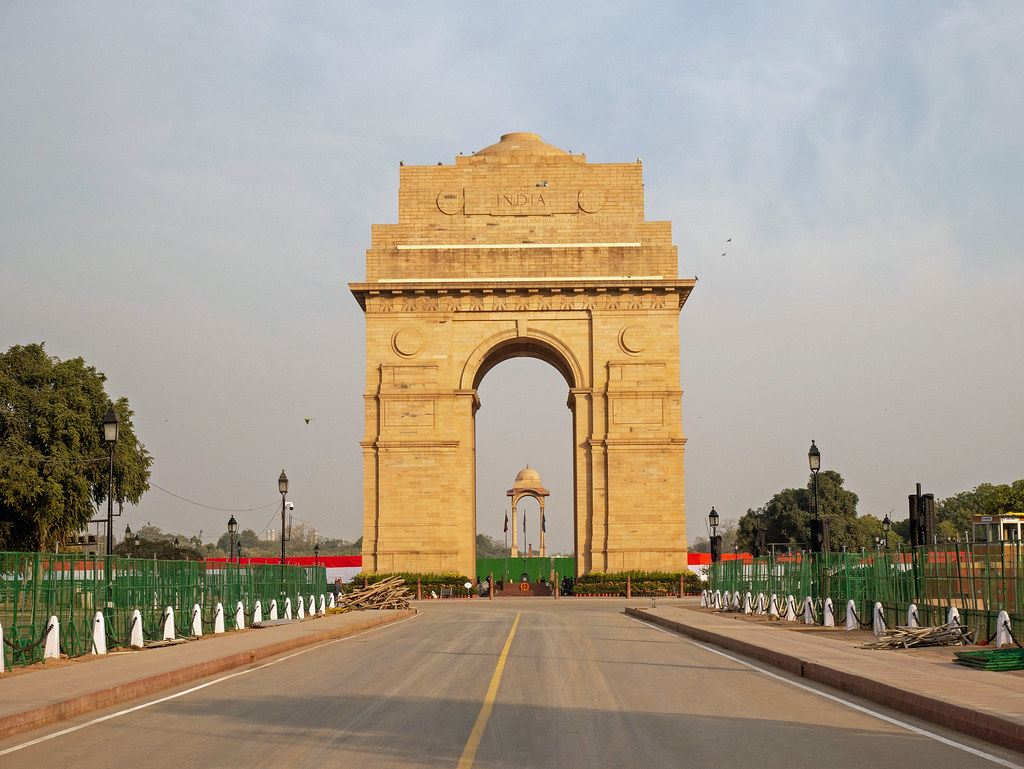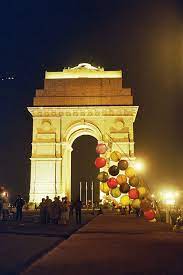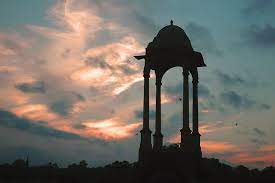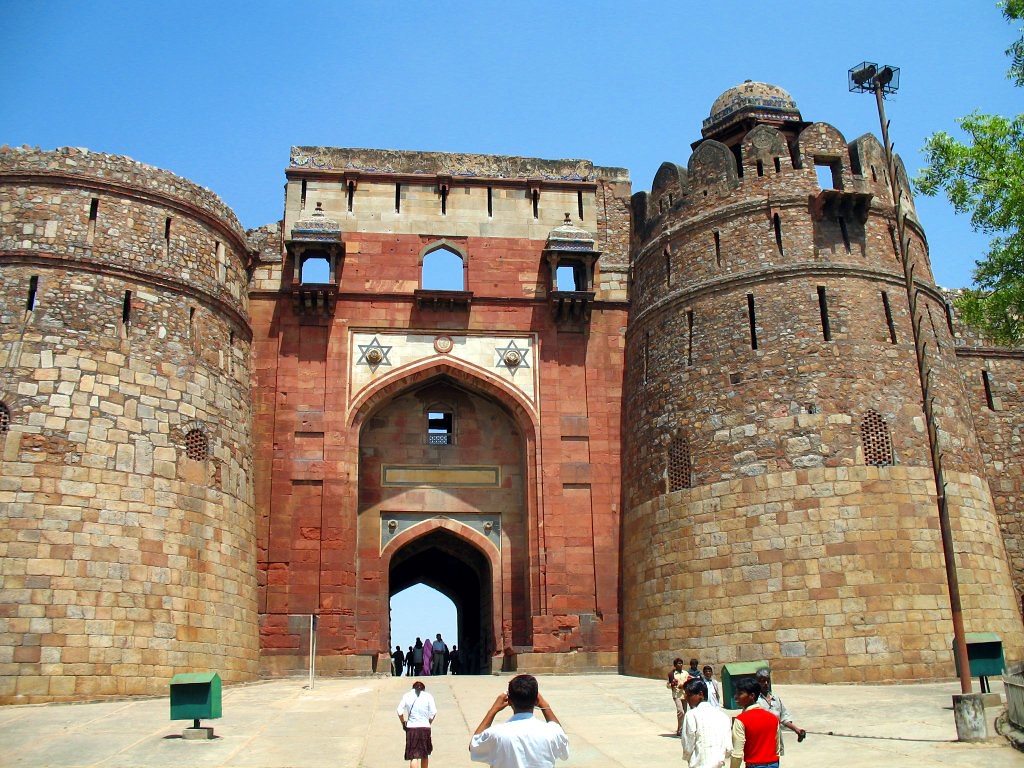
Plan a Trip To India Gate On Weekends
The India Gate was constructed to honor the 90,000 Indian soldiers who lost their lives in the North West Province during World War I and the Afghan Conquest of 1919. Rajpath is arguably the most prestigious neighborhood in the entire city of Delhi. The sandstone arch, which rises to a height of 160 feet, is 136 feet externally and 87 feet 6 inches internally tall.

The first gate built in New Delhi is also credited to India Gate. On its walls are engraved the names of the soldiers in whose honor the Gate was built, and there is also an eternal flame known as the Amar Jawan Jyoti nearby. In 1921, HRH the Duke of Connaught laid the memorial’s cornerstone, and Lord Irwin, the country’s viceroy at the time, dedicated the monument to the country ten years later. After India gained its independence, the Amar Jawan Jyoti was added to the memorial in honor of the soldiers who died in the Indo-Pakistan War in December 1971.
The India Gate is one of India’s most significant symbols today, and the majority of visitors to the nation’s capital city include it on their itinerary. Everyone can find entertainment at India Gate, whether they choose to eat at one of the roadside restaurants or watch a monkey show outside. Therefore, if you’re thinking about visiting the capital, be sure India Gate is a key stop on your itinerary.

The 42 m high stone arch of victory known as the India Gate is located at the eastern end of Rajpath in Central Delhi. Formerly known as the All India War Memorial, the Duke of Connaught laid the building’s cornerstone in 1921, and Lord Irwin, the country’s viceroy at the time, dedicated it to the people in 1931.
The India Gate, created by Sir Edwin Lutyens, has a low base of red Bharatpur stone that rises gradually to a massive cornice. With MCM on either side and XIX to the right, INDIA is written above on both sides. The walls of this magnificent building bear the names of the 90,000 Indian Army soldiers who died in World War I as well as another 13,516 names of those who died in the North-West Frontier during the Afghan War of 1919.

An eternal flame, known as Amar Jawan Jyoti, was lit beneath the arch of India Gate in 1971 in memory of the many brave soldiers who died serving their country but whose identities are unknown. Soldiers in uniform keep watch over the flame. A shining rifle with a soldier’s helmet atop it is positioned on a tall pedestal next to the flame as a memorial to these fallen soldiers.
One of Delhi’s most important locations both politically and historically is India Gate. As it displays its grandeur to honor the heroic sacrifice made by the Indian Army, it is portrayed as an All India War Memorial. The British Raj built it as a war memorial as a tribute to the British Indian Army soldiers who died in the First World War. Sir Edwin Lutyens is acknowledged as the architect of this building. This building’s foundation was set in 1921. It was finally opened in February 1931 by Sir Lord Irwin, the Viceroy of India at the time, after ten years of planning and construction.

In addition to the 72,000 soldiers who died in the First World War, it is now regarded as an honorary memorial to the 13,300 soldiers who served in the Anglo-Afghan War, which is also known as the Bangladesh Liberal War. Amar Jawan Jyoti, also known as the Flame of the Immortal Soldier, is located on the grounds of India Gate and is perpetually lit or flamed in remembrance of the martyrs. To honor this custom, a large parade passes by India Gate on Republic Day.
About 150 meters from the Gate, there is a canopy there. This canopy’s architecture was influenced by the pavilions at Mahabalipuram in the sixth century, starting a journey toward decadence. The canopy is made up of four ornately designed pillars and a dome.
However, King George V, the Indian Emperor at the time, had his building built there originally, not the canopy. After independence, there was a lot of opposition, and the statue was then buried with the other pre-independence Indian ruins. India Gate honors the valiant martyrs for their unending sacrifices and is a celebration of independent India.
13,300 names of British officials, servicemen, and soldiers from India are inscribed on the gate. Later in 1971, a tiny black marble structure with a reversed rifle holding a war helmet on top was erected underneath the arch. This structure is called Amar Jawan Jyoti.
The gate is 42 meter tall standing on a basement made of Bharatpur red stone. A shallow dome is open on the top of the wall, which was used to light the gate with burning oil.
A few meters away from the gate, you can find a canopy, which was built, similar to the pavilion of Mahabalipuram. This canopy serves as a monument to former Indian ruler King George V.
A marble statue of the king in his royal robes and wearing the Imperial crown was inaugurated in the canopy and it was removed later.
How to Reach India Gate?
To get to India Gate from Delhi, you can quickly locate all available modes of transportation. From many locations around the city, there are direct buses that stop close to the India Gate. Central Secretariat, on the yellow and violet lines, is the station closest to the India Gate.
Entry Fee
The monument is open to tourists throughout the year and throughout the day. There is no entry charge or photography charge for the monument.
Street food from local stalls
Both locals and visitors love the street food in New Delhi. Therefore, it makes sense why so many people pick to picnic in front of the monument. If you happen to come across any street food vendors while at India Gate and are in need of some food, think about trying some of it. The best options include chilled ice chuski, roasted corn on the cob, and “bhelpuri,” a savory snack.
Boating
Consider taking a boat ride if you want to see the monument from a different angle. To tour the lake on your own or with a pro, you can rent pedal boats and rowboats from the neighborhood boat club. While it is accessible from mid-afternoon, the best time to take a boat ride is in the late evening when India Gate is illuminated. The cost of boating varies depending on the type of boat you select and how long you intend to spend on the water.
Nearby Attractions
Rashtrapati Bhawan
The President of India’s official residence.
All significant government offices are situated in the North and South Block.
The largest democracy in the world conducts its business at Parliament House, where the Indian Parliament convenes.
National Museum
This museum houses a sizable collection of historical artifacts, both domestic and foreign in origin.
National Gallery of Modern Art
Known for its collection of modern Indian art, this museum features about 4,000 works by contemporary artists on display.
Connaught Place
Well-known market where you can find anything from jewelry to books to leather goods to clothing from all over the world and India.
Indian handicrafts and oddities are kept in the Central Cottage Industries Emporium.
Baba Kharak Singh Marg
This marketplace is home to the distinctive art and crafts produced by seasoned craftspeople in each state.
India Gate is dramatically floodlit at dusk, and the nearby fountains put on a lovely show with colored lights. Rajpath’s India Gate is located at one end, and the neighborhood around it is often referred to as “India Gate.”.
A sizable area of lush, green lawns surrounds the imposing building; this area is a well-liked picnic area. On summer evenings, throngs of people can be seen walking around the well-lit area and on the lawns.
Since Amar Jawan Jyoti is an “eternal” flame, it never goes out of flame. After the 1971 Indo-Pakistan War, it was put in place as a memorial to all of the Indian Armed Forces soldiers who died as martyrs while defending their nation. The inverted bayonet with a soldier’s helmet perched on top is the memorial’s well-known national symbol.
Best Time To Visit
The best time to visit is between 7 pm and 9:30 pm. During this time, the structure will be illuminated. If you visit in the evening, you can find many street food vendors selling local snacks and delicacies.
If you visit in January, you ought to witness the parade that passes through the India Gate on Jan 26th, the Republic day.
Dress Code
If you’re visiting during Delhi winters, ensure you’re covered up well and have warm scarves and sweaters on you. During the summers, temperatures rise in the city so it’s best to be dressed in light cotton clothing, with your arms covered to avoid tanning or sunburn.
